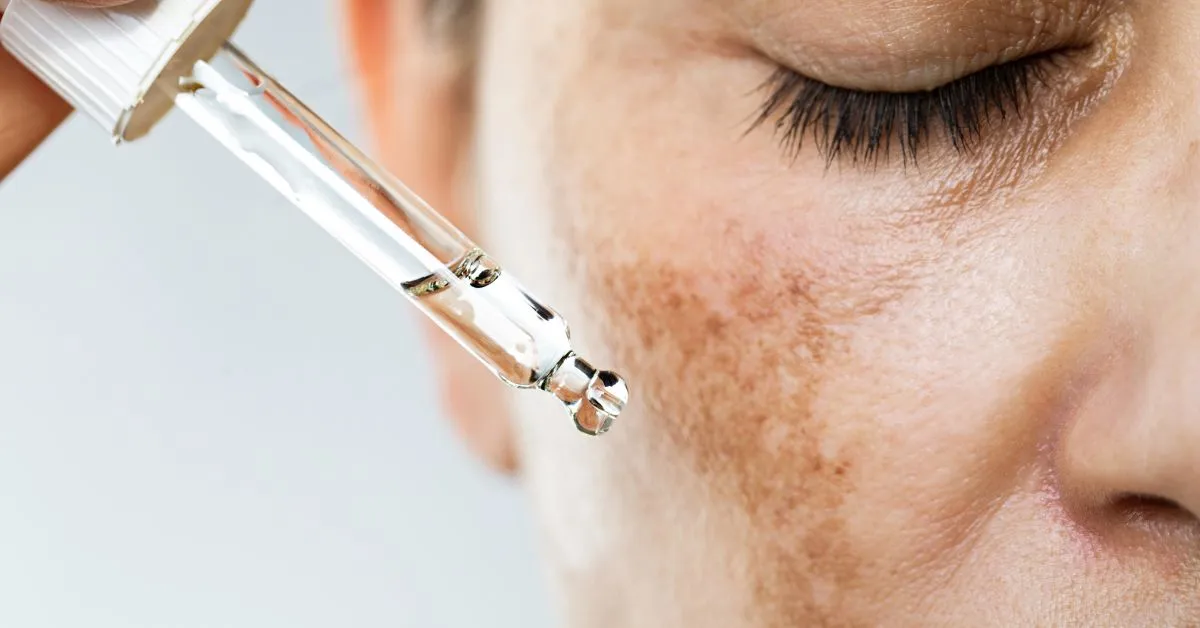- Sebaceous glands enlarged by trapped sebum is known as sebaceous hyperplasia.
- This results in shiny bumps, usually on the nose and forehead, which are depressed in the center.
- Home remedies, medications, and cosmetic procedures can reduce the appearance of sebaceous hyperplasia.
Are you thinking that the bumps on your nose might be white heads or basal cell carcinoma? You might actually have sebaceous hyperplasia.
What is sebaceous hyperplasia?
Sebaceous glands secrete what’s called sebum — an oil consisting of fats and cell debris — which helps lubricate the skin, and keep out foreign bacteria and other substances. This is what people are often referring to when they talk about having oily skin or hair.
Overactive oil glands can result in excess sebum production, creating conditions like acne or an oily scalp. You can find sebaceous glands near hair follicles all over your body, but they are most often on the back, groin, armpits, shoulders, and face.
Sebaceous hyperplasia is a benign condition where sebaceous glands, typically those on the forehead and nose, become enlarged with trapped sebum. This results in the appearance of shiny, benign bumps, that are depressed in the center with a yellow or white outer rim. The depressed center is an indicator that you’re experiencing sebaceous hyperplasia papules as opposed to whiteheads.
At first glance, it can be easy to confuse sebaceous hyperplasia with basal cell carcinoma, which could potentially be a malignant skin tumor, so be sure to schedule an appointment with your dermatologist to make sure that you don’t have skin cancer.
Those who have oily or combination skin tend to notice these bumps appearing after the age of 40. If you are younger, you can reduce your likelihood of getting sebaceous hyperplasia later in life by learning about your skin type, and finding some high quality skincare products that can help mediate your skin’s natural oil production.
Bumps tend to appear in clusters as the areas of your skin with more oil glands are more likely to get clogged and enlarged. While they’re usually small and painless these bumps tend to be considered visually unappealing.
Those with lighter skin tones who’ve had a lot of sun exposure are the most likely to get sebaceous hyperplasia as skin and oil glands are affected by sun damage.
Individuals with the genetic condition Muir-Torre syndrome are more prone to lesions and other skin conditions, and therefore more likely to get sebaceous hyperplasia. If you have Muir-Torre syndrome, you’re also more prone to skin cancer, so regular visits to your doctor are crucial in order to catch any potential growths or tumors in their early stages.
Other triggers for sebaceous hyperplasia include genetics and having a personal history with the condition.
At-home treatments
There are several at-home treatments that you can try if you want to reduce the appearance of these unsightly bumps. While it’s important to recognize that the condition can’t be cured, it can still be managed.
Despite many doctors saying that sebaceous hyperplasia has nothing to do with diet, some dermatologists still recommend following a healthier diet as a way of reducing skin problems.
According to Dr. Cynthia Bailey, a board-certified dermatologist based in Sebastopol, CA, a diet to enhance the health of your skin should contain fresh, organic foods with high amounts of beta carotene, omega-3, probiotics, and natural spices. She also recommends taking a vitamin D supplement and avoiding junk food, refined carbs, and dairy products.
Los Angeles based dermatologist Dr. Jessica Wu says that “the nutrients you’re putting in your mouth eventually show up on your skin.” With that in mind, it’s not unreasonable to assume that changes to your diet could influence the health and appearance of your skin.
Applying a warm compress can help to shrink the bumps by helping dissolve any build up of fluids beneath the skin.
Other recommended home remedies include apple cider vinegar, peppermint oil, and lemon oil.
Apple cider vinegar is recommended because it has qualities that balance your skin’s pH, which can help you manage your sebaceous gland hyperplasia. By dabbing apple cider vinegar on your skin, you can help minimize the bumps and prevent new ones from appearing.
Peppermint is a natural antiseptic, anti-inflammatory, and antibacterial solution. This means that you can apply it to your skin to reduce excess oil, minimize inflammation, and shrink your sebaceous glands.
Lemon oil, like apple cider vinegar, is a natural way to balance pH levels but can also be an effective moisturizer.
Green tea extract, tea tree oil, and clay-based masks and exfoliants have also all been shown to make a difference in the treatment of sebaceous hyperplasia. The antioxidants in green tea help to keep your skin clear and healthy by inhibiting the production of oil. As Wu notes: “Cold green tea compresses can help reduce inflammation and oil production as well as calm breakouts.”
Tea tree oil is known for killing the bacteria that causes acne. Clay-based masks and exfoliants pull oils and dirt out of your pores, which ultimately unclogs them and keeps them free of buildup.
Medications
Your dermatologist may also recommend taking retinol, a form of vitamin A. Retinol can help to control the growth of skin cells, which will then keep your oil glands from over-producing and getting clogged. It’s also an anti-inflammatory, which helps to calm your skin, reduce inflammation, and minimize the appearance of sebaceous hyperplasia.
Anti-androgen medications, which reduce the amount of testosterone in the body, are sometimes recommended for women experiencing sebaceous hyperplasia. Anti-androgen therapy works by blocking and reducing the production of certain male sex hormones. In targeting androgen levels, these drugs act on both the sebaceous gland and the hair follicle, which means they can be used for a variety of skin disorders and hair problems.
Certain contraceptives methods happen to be commonly used anti-androgen medications, and they can help with many different skin problems. Anti-androgen medications are considered a fairly drastic treatment because they can have a major impact on your hormone levels. This medication should only be utilized after all other treatments have failed.
Oral isotretinoin is another medication prescribed to help sebaceous hyperplasia. It’s commonly used to treat cystic acne when other medications have proven ineffective, but the drug can also be helpful for other skin conditions. Oral isotretinoin works by suppressing sebum production, so while it won’t get rid of existing papules, it can reduce their size and appearance while slowing or inhibiting the growth of new ones.
Professional treatments
One effective sebaceous hyperplasia treatment is getting facial peels, which penetrate the top layer of the skin. Using salicylic acid, an exfoliant with anti-inflammatory properties, can help to clear out dead skin while also reducing inflammation. Stronger facial peels utilize trichloroacetic acid, which penetrates deeper into the skin for a more noticeable reduction in skin lesions.
Electrocauterization involves the use of an electric needle to apply a current and burn or coagulate a specific part of tissue. This then allows the dermatologist to extract excess sebum from the pores. The pores are then treated with trichloroacetic acid, which makes them shrink and tighten, thereby preventing other bacteria from getting into the skin.
According to Associates in Dermatology in Orlando, Florida, the process is painful but generally quick and requiring little to no downtime. However, you will have a superficial burn at the treatment site that will form a scab. This scab will eventually fall off, and you can use a topical antibiotic to speed up the healing process.
With laser therapy, the patient is given a topical anesthetic and the dermatologist uses a laser to make an incision in each papule. Then, using an acne extractor, the dermatologist squeezes the papules to discharge the excess sebum. There are various types of laser treatment, including carbon dioxide, argon, and pulsed-dye laser.
Photodynamic therapy, also known as PDT or blue light therapy, involves the use of a photosensitizer drug in order to treat certain areas of the skin. First, the drug is applied to the affected area, and the photosensitizer is quickly absorbed by the skin. The drug is then activated using a light source, allowing it to destroy the affected tissue, thereby clearing out any sebaceous hyperplasia papules in the targeted area.
Finally, the surgical removal of sebaceous hyperplasia bumps should be considered as a last resort. The bumps on your skin can be surgically removed, and while no new bumps will appear in the area afterward, you will likely experience a certain degree of scarring.
You have options
From surgical removal to home remedies there is no shortage of treatment options available for these bumps. While meeting with a certified dermatologist may offer you the quickest route to an effective treatment, those intent on taking the natural route still have a wealth of choices to pick from.
Your budget and aesthetic goals will undoubtedly play a role in your treatment selection process, but above all patience will help you make the best choice for you and your skin.









